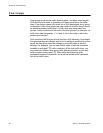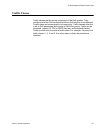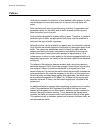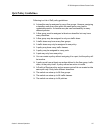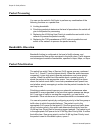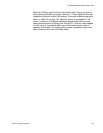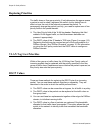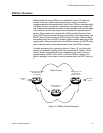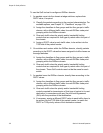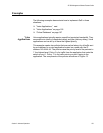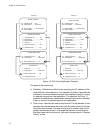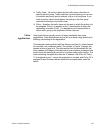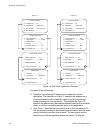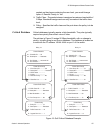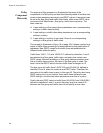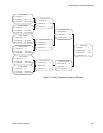Chapter 13: Quality of Service
152 Section II: Advanced Operations
To use the QoS tool set to configure a DiffServ domain:
1. As packets come into the domain at edge switches, replace their
DSCP value, if required.
Classify the packets according to the required characteristics. For
available options, see Chapter 10, “Classifiers” on page 109.
Assign the classifiers to flow groups and the flow groups to traffic
classes, with a different traffic class for each DiffServ code point
grouping within the DiffServ domain.
Give each traffic class the priority and/or bandwidth limiting
controls that are required for that type of packet within this part of
the domain.
Assign a DSCP value to each traffic class, to be written into the
TOS field of the packet header.
2. On switches and routers within the DiffServ domain, classify packets
according to the DSCP values that were assigned to traffic classes on
the edge switches.
Assign the classifiers to flow groups and the flow groups to traffic
classes, with a different traffic class for each DiffServ code point
grouping within the DiffServ domain.
Give each traffic class the priority and/or bandwidth limiting
controls that are required for that type of packet within this part of
the domain. These QoS controls need not be the same for each
switch.
3. As packets leave the DiffServ domain, classify them according to the
DSCP values.
Assign the classifiers to flow groups and the flow groups to traffic
classes, with a different traffic class for each DiffServ code point
grouping within the DiffServ domain.
Give each traffic class the priority and/or bandwidth limiting
controls required for transmission of that type of packet to its next
destination, in accordance with any Service Level Agreement
(SLA) with the providers of that destination.
If necessary, assign a different DSCP value to each traffic class, to
be written into the TOS field of the packet header, to match the
DSCP or TOS priority values of the destination network.



